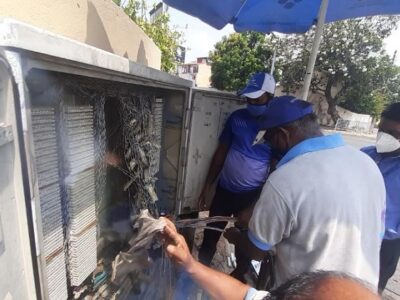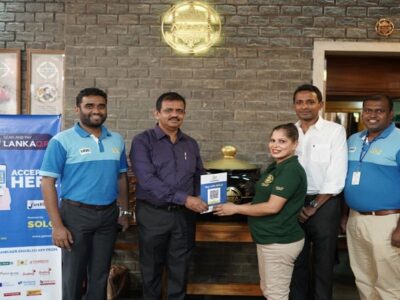(LANKAPUVATH | COLOMBO) – Sri Lanka’s total volume of digital retail payments can potentially reach up to Rs 77.2 trillion by 2027, 128% more than the 2022 level, analysis from Robocash Sri Lanka has revealed.
The company’s optimistic forecast is based on the assumption that all major macroeconomic indicators in the next five years reach their equilibrium level or have stable positive dynamics over 12 quarters, starting in 2024.
In the worst long-term scenario, the company expects the total volume of digital retail payments in Sri Lanka to reach Rs 43.94 trillion by 2027, 30% more than the 2022 level.
Sri Lanka is widely recognized for its high rate of citizens with active bank accounts, and it is currently in the midst of an impressive fintech expansion, demonstrating remarkable resilience even in the face of economic challenges. As of 2022, approximately 90% of the population holds active bank accounts, and there are a notable 18.7 million debit cards in circulation. This has contributed to an outstanding 85% debit card usage rate, significantly surpassing the global average of 51%.
However, the utilization of credit cards in Sri Lanka currently stands at 10%, which is slightly below the global average of 22%. Nevertheless, this trend paints an optimistic and promising picture for Sri Lanka’s fintech market, underscoring its potential to thrive even in challenging economic conditions.
As of early 2023, Sri Lanka has seen substantial progress in embracing digitalization, with 14.6 million internet users and 7.2 million active social media users. The country’s digital literacy rate, on par with developed European Union (EU) countries at 57%, reflects the strong digital skills among its adult population. Notably, the e-commerce sector is thriving, boasting 5.5 million users and a market value of Rs 777.6 billion (USD 2.4 billion)[1] in 2023, primarily driven by the electronics segment. The e-commerce market is projected to maintain an impressive compound annual growth rate (CAGR) of 15.29% from 2023 to 2027, reaching a market volume of Rs 1,387.52 billion (USD 4.28 billion)1 by 2027.
In an era marked by the COVID-19 pandemic, digital payments in Sri Lanka have experienced remarkable growth. Transactions have surged from Rs 5.6 trillion in Q1 2021 to RS 9.4 trillion in Q1 2023, representing a growth rate of 68% over 2 years. The value of transactions via the Lanka QR digital payment gateway amounted to Rs 681 million in Q3 2023, showing a growth of 84% year-on-year.
Both the Sri Lankan government and the private sector have made substantial efforts to promote digital payments, playing pivotal roles in enhancing digital payment solutions and fostering financial inclusion.
In the forthcoming years, Sri Lanka is set to implement a Digital Government initiative, which aims to streamline digital identification and document digitization. This initiative is expected to significantly facilitate electronic Know Your Customer (eKYC) for digital service providers and further boost fintech penetration.
Despite facing recent economic challenges, the growth of Sri Lanka’s fintech sector remains steadfastly optimistic. The number of digital payment users is projected to reach 10 million by 2027, with a projected transaction value of Rs 4,481.32 billion (USD 13.83 billion)1, growing at a CAGR of 20.54%. Notably, mobile point-of-sale (POS) payments are anticipated to dominate, with 3.2 million users and a transaction value of Rs 2,342.16 billion (USD 7.24 billion)1. Additionally, the Digital Assets segment is on track to reach Rs 3,978 million (USD 12.25 million)1 in 2023, with a remarkable 56.5% revenue growth projected for 2024.
However, it’s important to acknowledge that Sri Lanka’s economy faces hurdles, including high public debt, inflation risks, and limited foreign investments. The nation’s economic recovery hinges on structural reforms and political stability.




